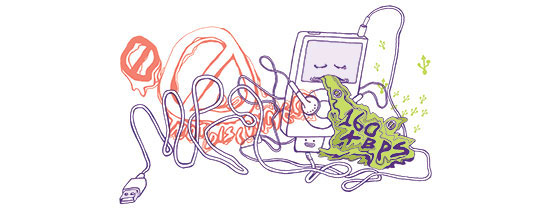Digital Music: Past and Future
Radiohead’s self-issued, internet-first, pay-as-you-wish release of In Rainbows is perhaps the best-selling digital album ever, […]

Digital Music: Past and Future
Radiohead’s self-issued, internet-first, pay-as-you-wish release of In Rainbows is perhaps the best-selling digital album ever, […]

Radiohead’s self-issued, internet-first, pay-as-you-wish release of In Rainbows is perhaps the best-selling digital album ever, according to unofficial early sales figures. But the stunt’s revolutionary appeal was tarnished when it was revealed that the files were released at a sub-par bit rate.
It would be interesting to hear what Dr. Jürgen Herre would have to say about such a fanatical debate over bit rate, as he’s probably been involved in a few during his career. As Chief Scientist for Media Activities at the Fraunhofer Institute for Integrated Circuits in Erlangen, Germany, Herre is as clued-in to the history of the MP3 as his title suggests. Since joining the Institute in 1989, he has worked in the lab where MP3 technology was developed and finalized just 15 years ago. He remembers the jury-rigged devices used to test the technology in its infancy, and has seen the nascent format perfected, popularized, and retooled into multi-channel surround MP3 technology. Here recently spoke to XLR8R about the format’s creation and continued development.
XLR8R: What was the original reason for developing the MP3 format?
Jürgen Herre: At the time, people were looking for data reduction schemes for digital audio. The Eureka 147 project, which started in 1987, was underway, which was meant to develop digital audio broadcasting for European radio systems, and you needed a lot of space to carry all the frequencies. People started to compete to solve that problem. Also, broadcast reporters wanted to convey live sounds over broadband, so we wanted to find out how to squeeze high-quality sound through a digital telephone line.
Describe the tests that you were running.
At the time, tests couldn’t be done on computers because they didn’t have enough processing power to decode the audio in real time. We had to set up our own hardware boxes containing digital-audio interfaces, circuit boards, and processors, and then had to digitally connect a CD player into that box. The first time we transferred music, it took five signal processors. We would, of course, also test the format with certain songs to see if it accurately reproduced audio. There’s a difference between nice music (which we’d like to listen to) and critical music that is very hard to capture in high quality. We looked for tracks with castanets, triangle, soft voices, peace pipes, and things like that. We ended up using a Suzanne Vega acappella of “Tom’s Diner” quite a bit.
What do you and the other scientists think about the continued popularity of the MP3?
It’s a great experience to see that it’s not just something people would use in a niche, professional market.
How do you feel about music piracy?
We’ve never been supportive of music piracy. With the increasing popularity of MP3s, we’ve been investing quite a lot into projects to make digital music more secure. We’ve worked on one of the very first systems that can digitally encrypt and decrypt audio content for people who pay. We’ve done quite a bit more with digital-audio watermarks.
What new projects are you working on?
A team here is working on an interactive audio format. The listener would be able to manipulate different instruments [within a song]. You could boost the bass drum or maybe cover the voice to do karaoke. It gives the user a chance to make a favorite mix and reposition things.

